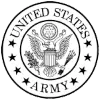Available 24/7
Professional Instruction
Free Training Materials






Course Details
The AZ-203: Developing Solutions for Microsoft Azure course is a 5-day course that is designed to teach students the knowledge and skills needed to implement Azure IaaS services and features in their development solutions. Students will learn about provisioning virtual machines, using Batch Service to deploy/maintain resources, and how to create containerized solutions by using Azure Kubernetes Service.
Topics covered in the course include:
- Implementing Azure Platform as a Service feature
- Creating and Managing Azure App Service resources
- Integrating push and offline sync in mobile apps
- How to document an API
- Create and testing Azure Functions
- Leveraging Azure storage services and features in their development solutions
- Azure authentication and authorization services
- Identity management and utilization in Azure solutions by using the Microsoft identity platform
- Accessing control (claims-based authorization and role-based access control)
- Implementing secure data solutions(using the Azure CLI, REST, and application code)
- Using Azure Cache and CDN options to enhance the end-user experience.
- Creating and managing APIs by using API Management
- How to use the different event- and message-based services in Azure within their development solutions
Target Student:This course is intended for students who wish to analyze and present data by using Azure Machine Learning. The secondary audience is IT professionals, Developers , and information workers who need to support solutions based on Azure machine learning.
Students should have the following prerequisite experience:
- Fundamental knowledge about Azure, version control, Agile software development, and core software development principles.
- Experience working in an IDE, as well as some knowledge of the Azure portal.
- Experience working in a software development or operations environment with either Windows or Linux would be helpful but is not required.
- Students should also have knowledge of general application development and deployment processe
AZ-203T01
Section 1: Implementing solutions that use virtual machines
Students will learn how to properly plan for VM deployment. It covers VM creation by using the Azure Portal, PowerShell, and through code. It also covers creating and using ARM templates for repeatable deployments and how to use Azure Disk Encryption to secure information on the VM.
Topics
Provision VMs
Create ARM templates
Configure Azure Disk Encryption for VMs
Section 2: Implementing batch jobs by using Azure Batch Services
Azure Batch creates and manages a pool of compute nodes (virtual machines), installs the applications you want to run, and schedules jobs to run on the nodes.
Topics
Azure Batch overview
Run a batch job by using the Azure CLI and Azure Portal
Run batch jobs by using code
Manage batch jobs by using the Batch Service API
Section 3: Create containerized solutions
You can build and run modern, portable, microservices-based applications that benefit from Kubernetes orchestrating and managing the availability of those application components. Kubernetes supports both stateless and stateful applications as teams progress through the adoption of microservices-based applications.
Topics
Create an Azure Managed Kubernetes Service (AKS) cluster
Create container images for solutions
Publish an image to the Azure Container Registry
Run containers by using Azure Container Instance or AKS
AZ-203T02
Section 1: Create App Service web apps
Azure App Service Web Apps (or just Web Apps) is a service for hosting web applications, REST APIs, and mobile back ends. Web Apps not only adds the power of Microsoft Azure to your application, such as security, load balancing, autoscaling, and automated management.
Topics
Azure App Service core concepts
Creating an Azure App Service web app
Creating background tasks by using WebJobs in Azure App Service
Section 2: Creating Azure App Service mobile apps
The Mobile Apps feature of Azure App Service gives enterprise developers and system integrators a mobile-application development platform that's highly scalable and globally available.
Topics
Getting started with mobile apps in App Service
Enable push notifications for your app
Enable offline sync for your app
Section 3: Create Azure App Service API apps
This section covers how to create and document an Azure App Service API.
Topics
Creating APIs
Using Swagger to document an API
Section 4: Implementing Azure Functions
Azure Functions is a solution for easily running small pieces of code, or "functions," in the cloud. You can write just the code you need for the problem at hand, without worrying about a whole application or the infrastructure to run it.
Topics
Azure Functions overview
Develop Azure Functions using Visual Studio
Implementing durable functions
After completing this Section, students will be able to:
AZ-203T03
Section 1: Develop solutions that use Azure Table storage
Azure Table storage is a service that stores structured NoSQL data in the cloud, providing a key/attribute store with a schemaless design. Because Table storage is schemaless, it's easy to adapt your data as the needs of your application evolve.
Topics
Azure Table storage overview
Authorization in Table storage
Table service REST API
Section 2: Develop solutions that use Azure Cosmos DB storage
This section covers Azure Cosmos DB storage. It instructs students on how it works, how to manage containers and items, and create and update documents by using code.
Topics
Azure Cosmos DB overview
Managing containers and items
Create and update documents by using code
Section 3: Develop solutions that use a relational database
SQL Database is a general-purpose relational database managed service in Microsoft Azure that supports structures such as relational data, JSON, spatial, and XML.
Topics
Azure SQL overview
Create, read, update, and delete database tables by using code
Section 4: Develop solutions that use Microsoft Azure Blob storage
Azure Blob storage is Microsoft's object storage solution for the cloud. Blob storage is optimized for storing massive amounts of unstructured data. Unstructured data is data that does not adhere to a particular data model or definition, such as text or binary data.
Topics
Azure Blob storage overview
Working with Azure Blob storage
AZ-203T04
Section 1: Implementing authentication
Microsoft identity platform is an evolution of the Azure Active Directory (Azure AD) identity service and developer platform. It allows developers to build applications that sign in all Microsoft identities, get tokens to call Microsoft Graph, other Microsoft APIs, or APIs that developers have built.
Topics
Microsoft identity platform
Implementing OAuth2 authentication
Implementing managed identities for Azure resources
Implementing authentication by using certificates, forms-based authentication, or tokens
Implementing multi-factor authentication
Section 2: Implementing access control
This section covers claims-based and role-based access control.
Topics
Claims-based authorization
Role-based access control (RBAC) authorization
Section 3: Implementing secure data solutions
This section covers securing data at rest and during transmission.
Topics
Encryption options
End-to-end encryption
Implementing Azure confidential computing
Manage cryptographic keys in Azure Key Vault
AZ-203T05
Section 1: Introduction to Azure Monitor
Azure Monitor is the central service that includes all of tools you need to monitor and optimize your solution.
Topics
Overview of Azure Monitor
Section 2: Develop code to support scalability of apps and services
This section covers how applications scale and how to handle some troubleshooting.
Topics
Implementing autoscale
Implementing code that addresses singleton application instances
Implementing code that handles transient faults
Section 3: Instrument solutions to support monitoring and logging
This section covers adding code to your app to send the data to Azure Monitor.
Topics
Configure instrumentation in an app or server by using Application Insights
Analyze and troubleshoot solutions by using Azure Monitor
Section 4: Integrate caching and content delivery within solutions
This Section shows students how to leverage Azure Cache for Redis and Azure CDNs to deliver assets to users more quickly.
Topics
Azure Cache for Redis
Develop for storage on CDNs
AZ-203T06
Section 1: Develop an App Service Logic App
Logic Apps helps you build solutions that integrate apps, data, systems, and services across enterprises or organizations by automating tasks and business processes as workflows. This section covers what they are and how to create them.
Topics
Azure Logic Apps overview
Create Logic Apps by using Visual Studio
Create custom connectors for Logic Apps
Create custom templates for Logic Apps
Section 2: Integrate Azure Search within solutions
Azure Search is a search-as-a-service cloud solution that gives developers APIs and tools for adding a rich search experience over private, heterogenous content in web, mobile, and enterprise applications. In this Section students will learn how to integrate Azure Search in to their solutions.
Topics
Create and query an Azure Search Index
Full text search in Azure Search
Section 3: API Management
API Management (APIM) helps organizations publish APIs to external, partner, and internal developers to unlock the potential of their data and services.
Topics
Introduction to the API Management service
Securing your APIs
Defining API policies
Section 4: Develop event-based solutions
This section covers developing event-based solutions in Azure by integrating Azure Event Grid, Event Hubs, and Notification Hubs in your applications.
Topics
Implementing solutions that use Azure Event Grid
Implementing solutions that use Azure Event Hubs
Implementing solutions that use Azure Notification Hubs
Section 5: Develop message-based solutions
Microsoft Azure Service Bus is a fully managed enterprise integration message broker. Service Bus is most commonly used to decouple applications and services from each other, and is a reliable and secure platform for asynchronous data and state transfer. Azure Queue storage is a service for storing large numbers of messages that can be accessed from anywhere in the world via authenticated calls using HTTP or HTTPS.
Topics
Implementing solutions that use Azure Service Bus
Implementing solutions that use Azure Queue Storage queues
Please check the course description to find prerequisite information.
AZ-203: Developing Solutions for Microsoft Azure
On-Demand Training Course
180/month licence
- 24/7 Access
- Hands-On Practice Exercises
- Free Repeats
- Professional Instruction
Testimonials
This was the class I needed.
The instructor Jeff took his time and made sure we understood each topic before moving to the next. He answered all of our questions, and I don't know about the rest of the students, but was very pleased with this experience.
I finally understand how to use Excel.
-Amanda T (Yale New Haven Hospital).
Great class!
We were able to cover a lot of information in one day without getting overwhelmed.
-Maria R (Microsoft).
Free Repeats
Learn At Your Pace
No Travel
Professional Instruction
Affordable Pricing
Group Discounts

